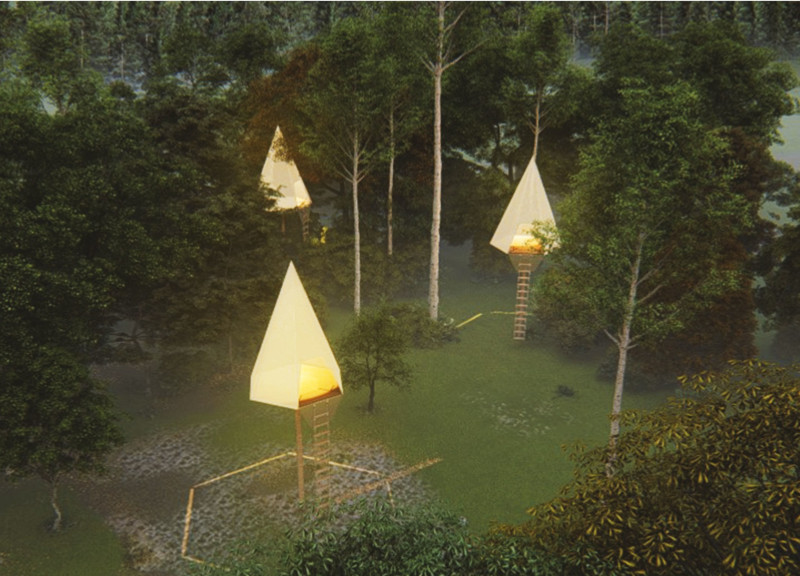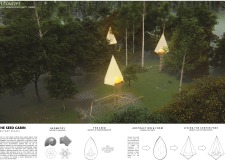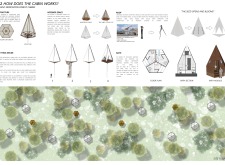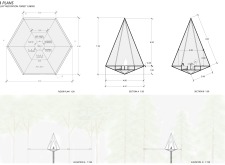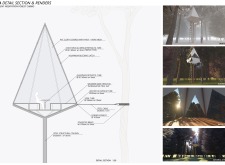5 key facts about this project
The project operates on principles of minimalism and sustainable design, emphasizing a harmonious relationship between human activity and nature. The primary function of the Seed Cabins is to offer tranquil spaces for individuals seeking mindfulness through meditation practices. Each cabin is equipped with essential amenities that allow for both private reflection and communal activities, such as gatherings for mindfulness sessions.
The design integrates natural materials to enhance user experience while promoting environmental sustainability. Key materials employed in the construction include impregnated pine wood for the base structure, aluminum for lightweight framing, PVC cloth and HDPE mesh for the roof, and large glass panels for maximizing light intake. This combination of materials contributes to the functional versatility of the cabins and their ability to withstand the rigors of a forest environment.
Unique Design Features
The Seed Cabins introduce a series of unique architectural elements that distinguish them from traditional meditation spaces. One notable feature is the dynamic roof system designed to open and bloom, akin to a flower. This allows for an enhanced connection to the outdoors while providing options for natural ventilation and scenic views. The roofs also serve as a functional canopy, offering shelter while promoting interaction with the environment.
Additionally, the use of an innovative ladder system facilitates easy access to elevated areas of the cabins, allowing users to experience nature from various perspectives. The layout of the cabins is thoughtfully arranged within the forest to ensure minimal disruption to the ecosystem, thus promoting sustainability and environmental respect.
Experiential and Spatial Quality
The interior spaces of the Seed Cabins are designed to foster a sense of tranquility and openness. The layout encourages fluid movement and interaction, reinforcing the idea of connectivity to one’s surroundings. The cabins can be utilized for various activities, making them adaptable to different user experiences.
In terms of spatial quality, the cabins utilize large openings to enhance the flow of natural light and create an inviting atmosphere. This architectural strategy not only improves the aesthetic value but also contributes to the overall well-being of users. Each design choice reflects a commitment to creating meaningful spaces that resonate with the principles of mindfulness and meditation.
For more insights into this innovative project, including architectural plans, sections, and design ideas, consider exploring the detailed presentations available for the Seed Cabin project. These resources provide a comprehensive look at the architectural design and functional outcomes realized through this carefully crafted initiative.


